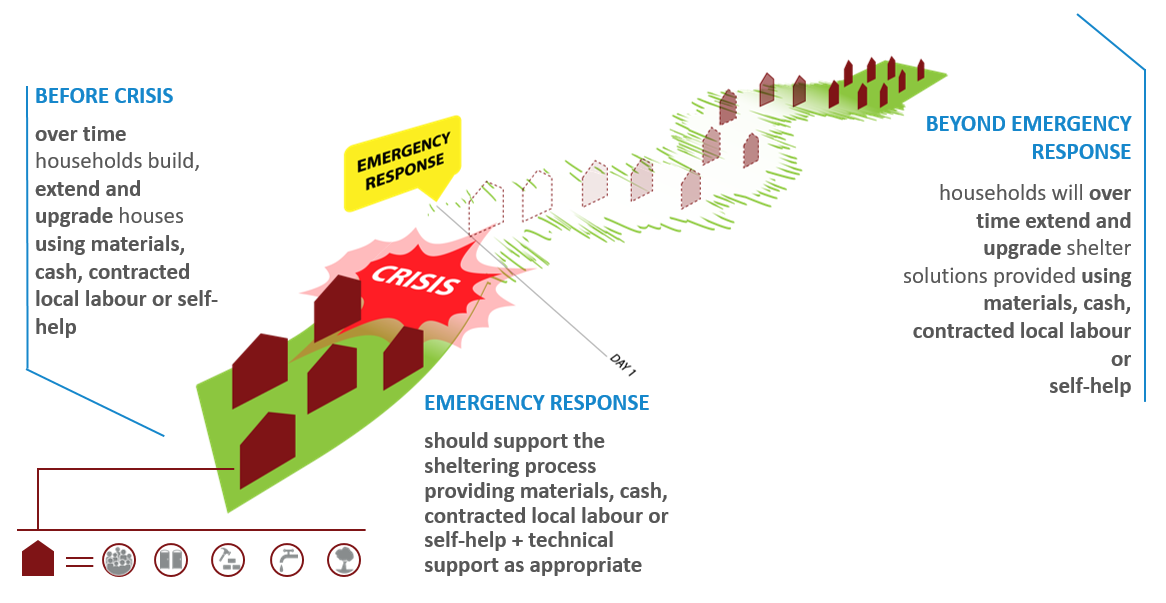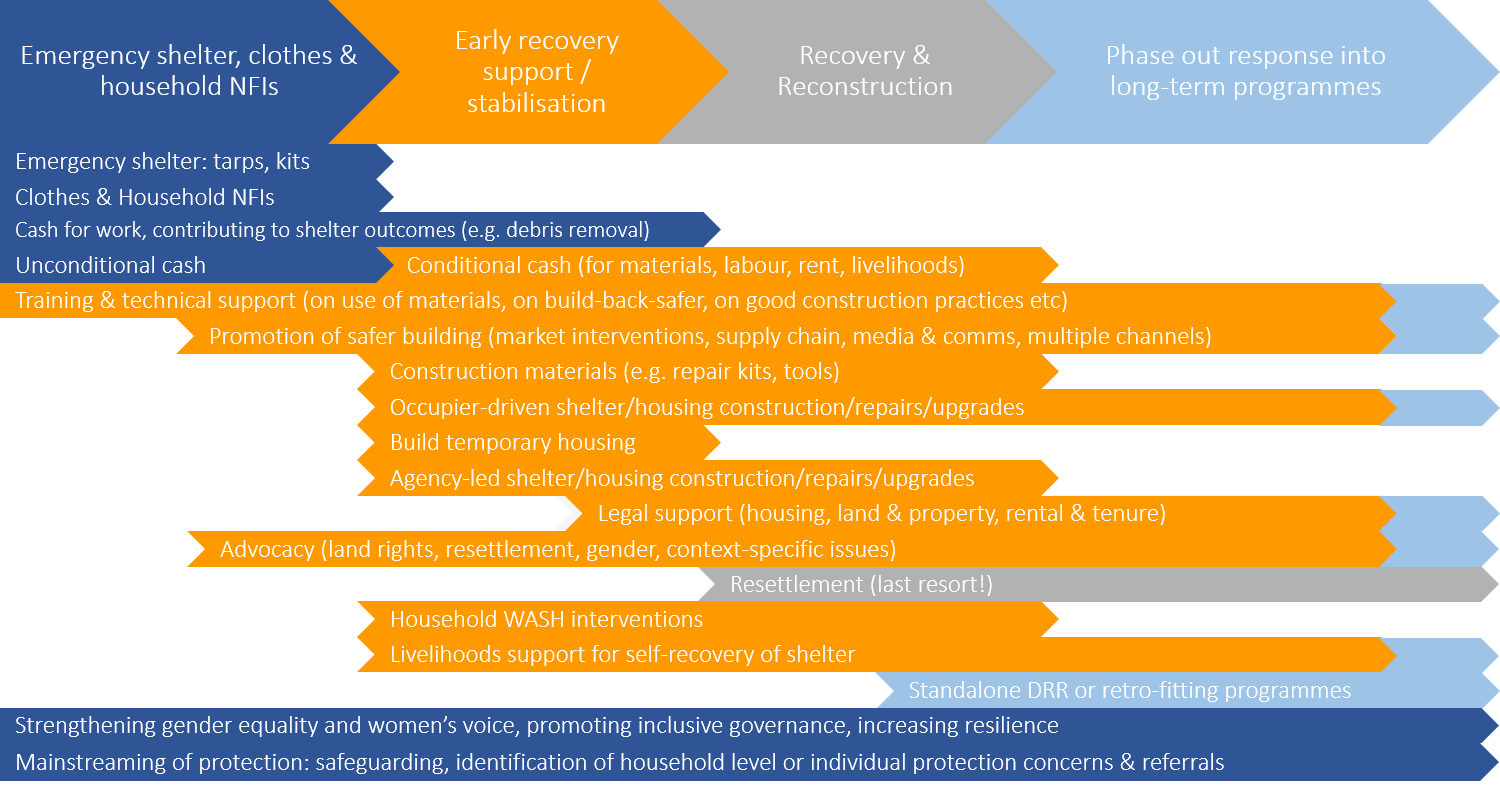1.1 What is humanitarian shelter?
Humanitarian or emergency shelter is relevant in cases of natural disaster, conflict or displacement where people have lost or abandoned their homes. It includes physical protection from the elements as well as providing a safe, dignified place to live. There is a multitude of options for the delivery of humanitarian shelter: including non-food items (NFIs), cash transfers, advocacy, kits, training, repair programmes, construction of temporary housing and more. Shelter programming is not confined to the construction of temporary houses or the provision of NFIs.
The scale is often unimaginable – a quarter of a million homes destroyed is not unusual for a major disaster. Our challenge is to have a significant impact that leaves a legacy of DRR and improved building practice.
Shelter is a process and not just a product. CARE’s shelter programmes should support and enable people to establish shelter and housing which meet their individual and collective needs. To do so there are many different ways to support people (see CARE’s shelter principles, below). These different ways are listed and discussed in section 4 What to do: Shelter programming and a menu of options, and illustrated by the graphic below:




